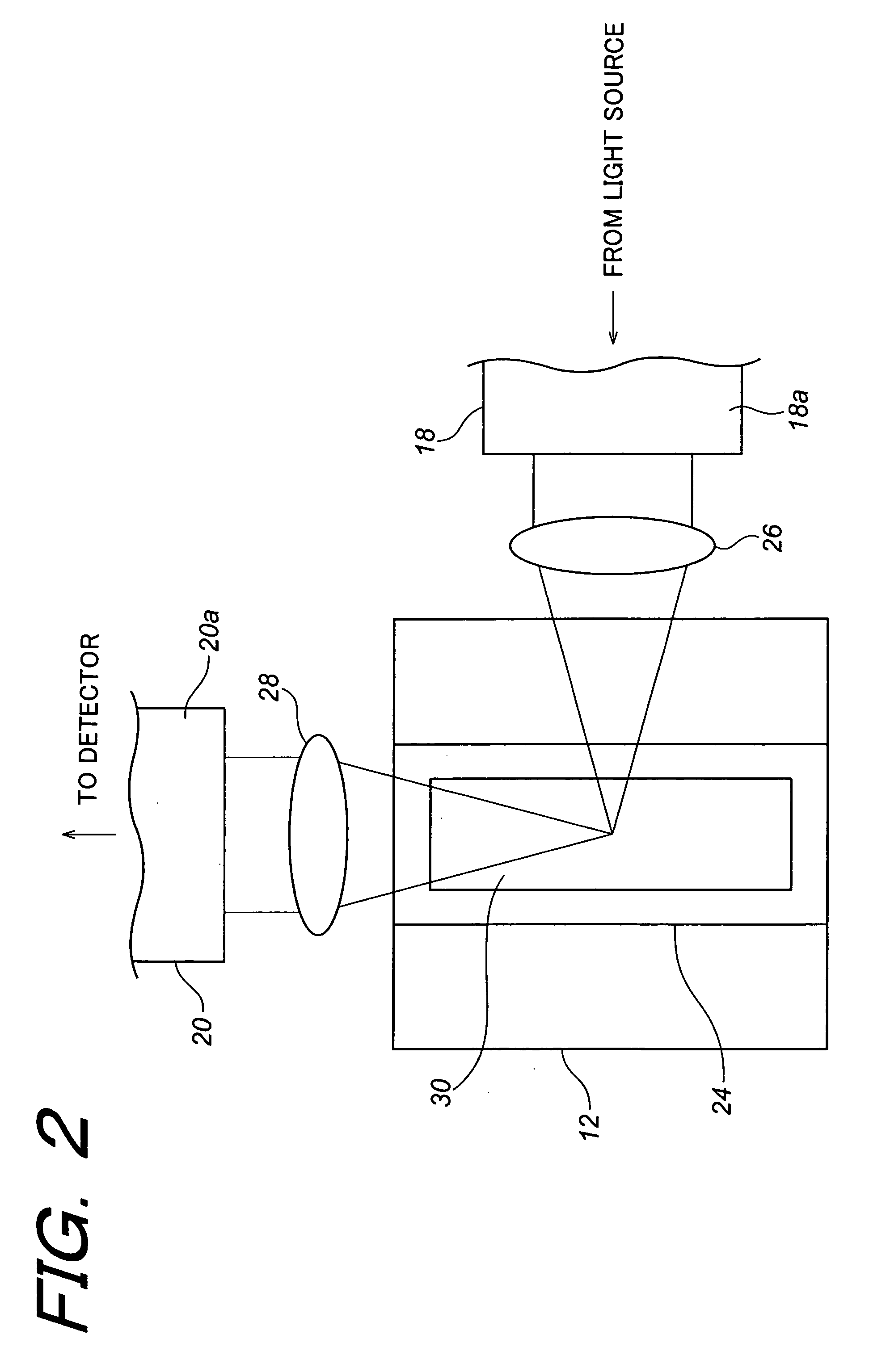Estimation method of fluorescent dye's concentration from multiple fluorescence and the estimation method of fluorescent intensity from multiple fluorescence
a technology of multiple fluorescence and concentration method, which is applied in the direction of fluorescence/phosphorescence, chemical methods analysis, instruments, etc., can solve the problems of noise, very limited synthesis of fluorescent dyes having mutual influence of a negligibly small level, and rather noisy synthesis
- Summary
- Abstract
- Description
- Claims
- Application Information
AI Technical Summary
Benefits of technology
Problems solved by technology
Method used
Image
Examples
experiment conditions
[0121] Mixed solutions, where the concentration of two types of fluorescent dye (FITC, RITC) were changed, were prepared, and they were used as samples to measure the spectrum of their fluorescence. In the explanation and the drawings related to this experiment, FITC are expressed as “A” or “dye A” appropriately, and RITC are expressed as “B” or “dye B” appropriately.
[0122]FIG. 1 shows the schematic constitution exemplary view of an experiment setup, and the experiment setup is constituted by having a light source 10, cuvette holder 12, a detector 14 equipped with a spectroscope therein, a personal computer 16 for acquiring data, an optical fiber 18 for guiding light between the light source 10 and the cuvette holder 12, an optical fiber 20 for guiding light between the cuvette holder 12 and the detector 14, and a cable 22 for transmitting data output from the detector 14 to the personal computer 16 for acquiring data.
[0123] Further, FIG. 2 shows the partial enlarged exemplary vie...
PUM
| Property | Measurement | Unit |
|---|---|---|
| distance | aaaaa | aaaaa |
| concentration | aaaaa | aaaaa |
| fluorescence | aaaaa | aaaaa |
Abstract
Description
Claims
Application Information
 Login to View More
Login to View More - R&D
- Intellectual Property
- Life Sciences
- Materials
- Tech Scout
- Unparalleled Data Quality
- Higher Quality Content
- 60% Fewer Hallucinations
Browse by: Latest US Patents, China's latest patents, Technical Efficacy Thesaurus, Application Domain, Technology Topic, Popular Technical Reports.
© 2025 PatSnap. All rights reserved.Legal|Privacy policy|Modern Slavery Act Transparency Statement|Sitemap|About US| Contact US: help@patsnap.com



